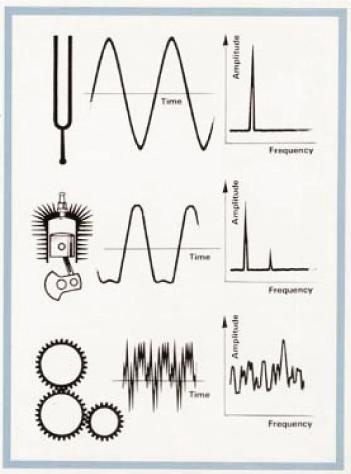|
A body is said to vibrate when it describes an oscillating motion about a reference position. The number of times a complete motion cycle takes place during the period of one second is called the Frequency and is measured in hertz (Hz). The motion can consists of a single component occuring at a single frequency, as with a tuning fork, or of several components occuring at different frequencies simultaneously, as for example, with the piston motion of an internal combusion engine. Vibration signals in practice usually consist of very many frequencies occuring simultaneously so that we cannot immediately see just by looking at the amplitude-time pattern, how many components there are, and at what frequencies they occur. These components can be revealed by plotting vibration amplitude against frequency. The breaking down of vibration signals into individual frequency components is called frequency analysis, a technique which may be considered the cornerstone of diagnostic vibration measurements. The graph showing the vibration level as a function of frequency is called a frequency spectrogram. When frequency analyzing machine vibrations we normally find a number of prominent periodic frequency components which are directly related to the fundamental movements of various parts of the machine. With frequency analysis we are therefore able to track down the source of undesirable vibration. (from Bruel & Kjar) |
 |


